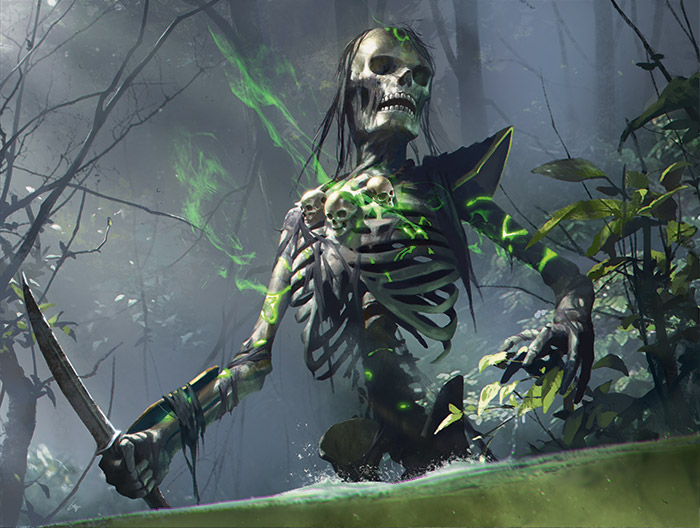“Look out, skeletons over there!”
“Shoot an arrow into the shiny one!”
*KABOOM*

Why add runic skeletons to an encounter?
To give a boost to an enemy that is iconic but weak
To surprise your players and urge them to adapt
Tactical advice
Even if it is far from being intelligent, a Runic Skeleton is “programmed” to place themselves within melee range and in the middle of their adversaries, to maximize the damages caused when it dies.
The Runic Skeleton becomes particularly interesting when placed within a larger group of undeads. Ideally, this group also includes several other Runic Skeletons so that adventurers have the opportunity to understand how the creature works and be able to adapt after the first explosion.
Signaling the presence of runes and their disturbing glow allows players to wonder about the creatures’ possibly exceptional capacities. If they are used in great numbers against adventurers of a higher level, the Dungeon Master could decide that using Dispel Magic terminates the effect of the runes.
Stats
Runic Skeleton
Medium undead, lawful evil Armor Class 15 (armor scraps) Hit Points 19 (3d8 + 6) Speed 30 ft.
STR
10(+0)
DEX
14(+2)
CON
15(+2)
INT
6 (-2)
WIS
8 (-1)
CHA
5 (-3)
Damage Vulnerabilities bludgeoning Damage Immunities poison Condition Immunities exhaustion, poisoned Senses Darkvision 60 ft., Passive Perception 9 Languages Understands all languages it knew in life but can’t speak Challenge1/2 (100 PX) Runes. When the Runic Skeleton dies, it explodes in a cloud of necrotic energy. Each living creature within 5 feet of the skeleton must succeed on a DC 10 Wisdom saving throw or take 3 (1d6) necrotic damage and become stunned. On a successful save, they take half as much damage.
Image credits
- Marang River Skeleton, Jack Wang
